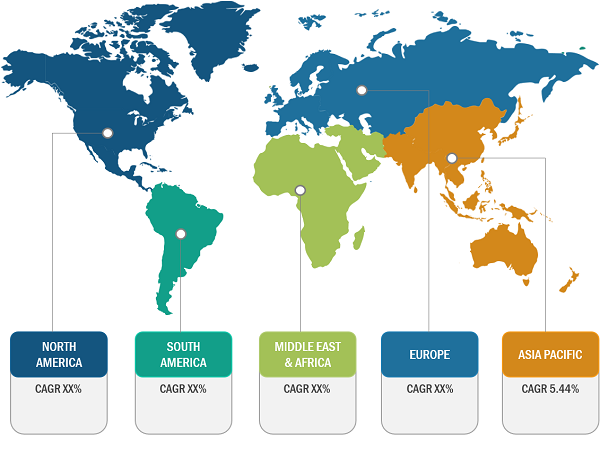Squamous Cell Carcinoma to Hold Larger Cervical Cancer Treatment Market Share During 2022–2030
According to our new research study on "Cervical Cancer Treatment Market Size and Forecast (2020–2030), Global and Regional Share, Trend, and Growth Opportunity Analysis," the market value is projected to grow from US$ 9,433.94 million in 2022 to US$ 14,074.08 million by 2030; the market is anticipated to record a CAGR of 5.13% from 2022 to 2030.
Cervical cancer refers to the cancer that occurs in the cells of the cervix, i.e., the lower part of the uterus that connects to the vagina. In 90% of the cases, cervical malignancies occur due to the Human papillomavirus infection (HPV) infection and are diagnosed through smear screening. The increasing prevalence of cervical cancer and the rise in HPV infections are the key factors driving the cervical cancer treatment market growth. However, the lack of awareness about the diagnosis and treatment methods hampers the market growth. Cervical cancer treatment market trends include the increasing R&D for cervical cancer diagnosis and drugs.
Cervical Cancer Treatment Market, by Region, 2022 (%)
Cervical Cancer Treatment Market Size and Forecasts (2020 - 2030), Global and Regional Share, Trend, and Growth Opportunity Analysis Report Coverage: By Type (Squamous Cell Carcinoma, Adenosquamous Carcinoma, and Adenocarcinoma), Product (Surgery, Radiation Therapy, Chemotherapy, Immunotherapy, and Therapeutic Vaccines), End User (Hospital, Homecare, Cancer Centers, and Others), and Geography
Cervical Cancer Treatment Market Growth by 2030
Download Free Sample
Source: The Insight Partners Analysis
Precancerous changes can delay the disease progression, thus offering an extended time window for its treatment. However, due to a lack of awareness or access to diagnostic services, many cases are detected in the later stages of illness. Human papillomavirus (HPV), typically transmitted through sexual contact, is one of the primary causes of cervical cancer. Out of 100 HPV strains reported, 13 are high-risk or carcinogenic strains. The HPV test detects human papillomavirus in cervical cells. The active gene E6 or E7 determines whether an HPV strain is of high or low risk. Other screening methods employed in low-resource areas of developing countries include HPV DNA testing and visual inspection. Cervical screening regularly aids in the early detection of cervical cancer, lowering the mortality rate from the disease. According to the National Cancer Institute, most women aged 21–65 should undergo the Pap test, while women aged 30–65 should undergo the Pap and HPV tests every three years. In terms of revenue, the HPV test dominates the cervical cancer screening market, and this trend is expected to continue during the forecast period.
The lack of awareness about cervical cancer among people, healthcare providers, and policymakers; limited access to high-quality healthcare services and cervical screening programs; and a lack of functional referral systems are among the factors leading to the high incidence and mortality from cervical cancer. Cervical cancer incidence and mortality have lowered in industrialized countries owing to improved access to cytological screening and rapid treatment of early cervical lesions. It is critical to implement population-based cervical screening and increase its acceptance in low- and middle-income countries (LMICs) to reduce cervical cancer mortality. Raising awareness about risk factors such as first sexual intercourse at a young age and having multiple male sexual partners; high risk associated with the HPV types 8, 9, and 10; first full-term pregnancy at a young age; prolonged use of oral contraceptives; and HIV infections may help boost participation in screening programs. Better awareness regarding the symptoms of cervical cancer, such as intermenstrual vaginal bleeding, postmenopausal vaginal bleeding, post-coital vaginal bleeding, foul vaginal discharge, and lower abdomen pain, might help women seek early help. Thus, the lack of awareness about cervical cancer among populations hinders the cervical cancer treatment market growth.
The cervical cancer treatment market forecast can help stakeholders plan their growth strategies. F. Hoffmann-La Roche Ltd, Merck Sharp, Dohme Corp., GlaxoSmithKline plc., Genentech Inc., Amgen Inc., Advaxis Inc., Biocon, Allergan Inc., Pfizer Inc., and AstraZeneca are a few key companies profiled in the cervical cancer treatment market report. Companies have been implementing organic (product launches, expansions, and product approvals) and inorganic (partnerships and collaborations) strategies that contribute to their growth and lead to market progress.
The report segments the cervical cancer treatment market as follows:
The market analysis has been carried out by considering the following segments: type, product, and end user. By type, the market is classified into squamous cell carcinoma, adenosquamous carcinoma, and adenocarcinoma. Based on product, the market is divided into surgery
radiation therapy, chemotherapy, immunotherapy, and therapeutic vaccines. By end user, the market is segmented into hospital, homecare, cancer centers, and others. The geographic scope of the cervical cancer treatment market report includes North America (the US, Canada, and Mexico), Europe (the UK, Germany, France, Italy, Spain, and the Rest of Europe), Asia Pacific (China, Japan, India, Australia, South Korea, and the Rest of Asia Pacific), the Middle East & Africa (the UAE, Saudi Arabia, South Africa, and the Rest of Middle East & Africa), and South & Central America (Brazil, Argentina, and the Rest of South & Central America). In 2022, North America held the largest cervical cancer treatment market share. In North America, the US holds a significant share. Increasing R&D activities, financial assistance from governments and other public and private organizations, partnerships between IT and pharmaceutical firms, and the rising incidences of neurological diseases primarily drive market growth in the country. Furthermore, strategic initiatives taken by the government to improve the testing procedures are anticipated to benefit the market during the forecast period. The increasing adoption of regulations pertaining to rare diseases will most likely probably present an opportunity for market expansion. For example, the American Cancer Society (ACS) revised the cervical cancer screening standards in September 2020. Thus, such active involvement of organizations is projected to fuel the market. Furthermore, the cervical cancer treatment market analysis is carried out by identifying and evaluating key players in the market across different regions.
Contact Us
Phone: +1-646-491-9876
Email Id: sales@theinsightpartners.com